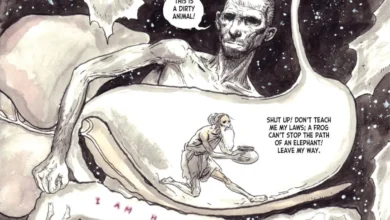All About Magic Arena Anthologies, and Are They Worth It?
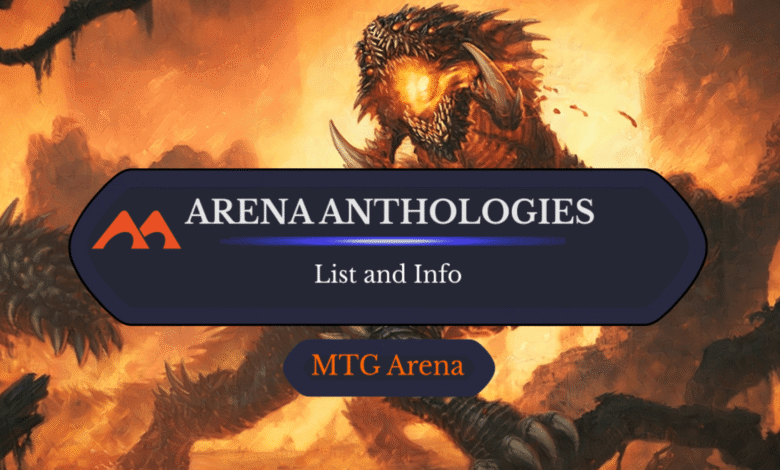
Pyrogoyf | Illustration by Xabi Gaztelua
The latest Arena Anthology release came as a welcome surprise for players, and it adds a fresh wave of iconic cards to Magic Arena. Whenever these bundles drop, the big question always comes up: Are they worth buying as a whole, or is it smarter to just craft the singles you need with wildcards?
Today, we break down past Anthologies and look at what they offered to help you to decide if the newest one deserves a spot in your collection.
Let’s dive in.
Should I Buy the Arena Anthologies?
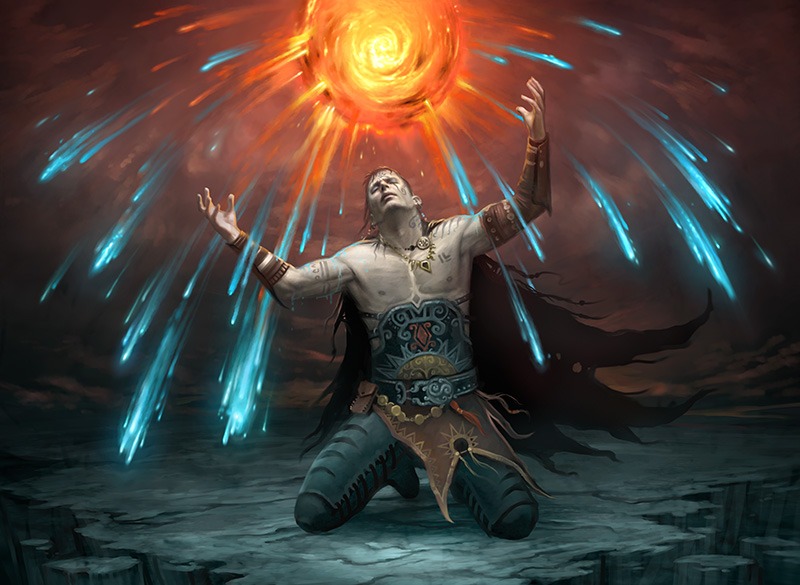

Mana Leak | Illustration by Howard Lyon
The big question is value. Arena Anthology costs 4,000 gems or 25,000 gold, and in return, you get a full playset of every card in the set. Compare that to bundles like the Alchemist bundle, where 20 packs cost 3,000 gems or 15,000 gold and only guarantee one random rare per pack. With Anthologies, you know exactly what you get and don’t have to spend wildcards.
From there, you can also compare the cost to full decks on Arena. Some Brawl precons run around 20,000–25,000 gems depending on how many rares and mythics they pack in. It’s important to know that you can’t just buy specific decks or singles whenever you want—they come and go as seasonal offers. Anthologies are also seasonal, and the 2025 iteration costs 4,000 gems. If you miss out, your only option is to craft the cards with wildcards later.
What Comes in an Arena Anthology?
Each Arena Anthology gives you a complete playset of four copies of every card included, usually around 20–25 different picks. These cards are chosen from Magic’s history to expand Arena’s digital formats. Instead of boosters or random pulls, you’re guaranteed every card up front, ready to use right away.
Arena Anthology 1
Arena Anthology 2
That said, each bundle comes with different contents. For example, Arena Anthology 1 includes 104 total cards (26 cards × 4 copies each), while Arena Anthology 2 has 100 total cards (25 cards × 4 copies each), both at the same 4,000 gem price tag. The difference lies in rarities: Anthology 1 leans heavily on commons and uncommons, while Anthology 2 focuses more on rares and mythics. The real value depends on which set of cards better fits your decks.
In Which Formats Can I Play Arena Anthology Cards?
Arena Anthology cards are designed mainly for Historic and Timeless, the two big non-rotating formats on Arena. Because these cards are permanently added to the client, they don’t rotate out like Standard sets do. That also means they’re automatically available in Brawl, since Brawl uses the same card pool as Historic.
If you’re buying an Anthology, think of it as an investment in the formats that don’t expire.
How Many Copies of Each Card Come in the Arena Anthologies?
When you buy an Anthology, you don’t just get one copy—you get a full playset of four copies of every single card. There’s no extra crafting required to max out on these cards.
How Do I Buy an Anthology?
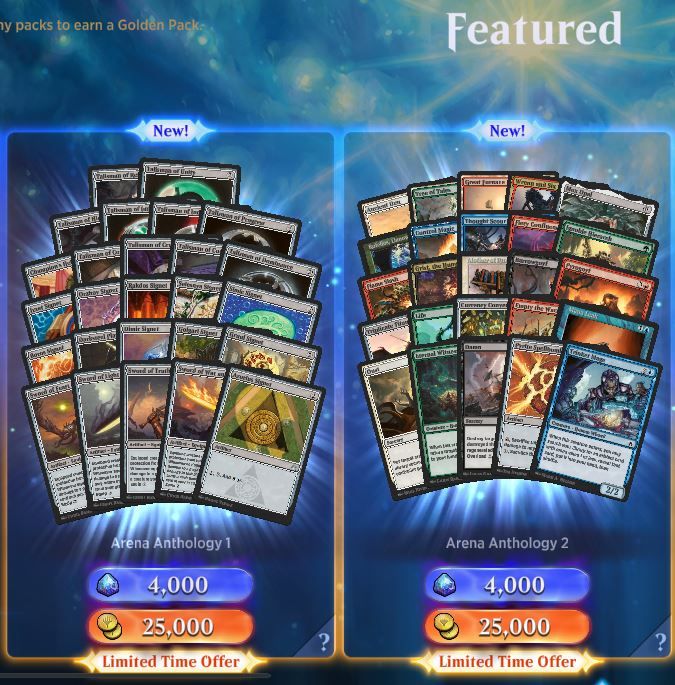

Buying is simple: Just head to the Arena Store during the sales window and pick it up for either 4,000 gems or 25,000 gold. Once you complete your purchase, all the cards are instantly added to your collection.
How Long Are Arena Anthologies Available in the Store?
Anthologies aren’t permanently in the store. They usually stick around for a few months, but they eventually rotate out. If you think you’ll want the cards, it’s best not to wait too long—once they’re gone, you’ll only be able to craft the cards with wildcards.
Crafting vs. Buying an Anthology
When it comes to Anthologies, the choice often boils down to your wildcard count, your preferred formats, and how much you like the contents. Crafting with wildcards gives you the freedom to pick only the cards you’ll actually play, which is perfect if you’re low on resources. Buying the Anthology, on the other hand, saves wildcards and gives you a guaranteed full playset that includes cards you might not think you’ll need right away.
From my own experience, I usually have plenty of wildcards thanks to drafting, so if I only wanted cards for Brawl, I’d just craft one or two copies instead of buying an entire Anthology. But the contents matter a lot. For example, Arena Anthology 1 was loaded with commons and uncommons, which most players already have plenty of. I wouldn’t recommend buying that one, since crafting those cheaper cards is easy. Arena Anthology 2, though, leaned much heavier toward rares and mythics, which makes it a lot more attractive to buy outright.
It also helps to compare prices. Four rare wildcards normally cost about $9.99, and four mythic wildcards cost $19.99. Buying gems costs $19.99 for 3,400 gems, which means picking up an entire Anthology for 4,000 gems can be far more cost-efficient if it includes multiple high-rarity cards.
At the end of the day, it all comes down to whether you’ll actually use the cards. If the Anthology includes staples you’ll play across formats, it’s usually worth it. But if you know those cards will just sit in your collection, crafting only what you need is the smarter move.
Alternatives to the Arena Anthologies
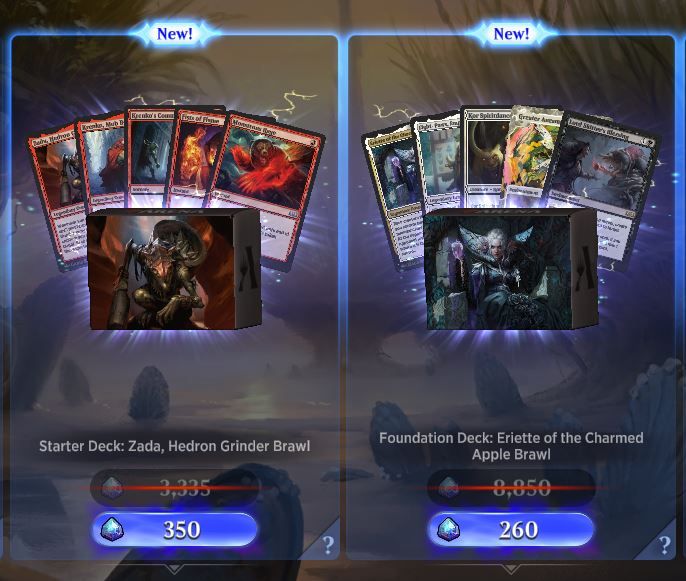

If you don’t want to buy an Anthology, there are still plenty of ways to grow your Arena collection. The store sometimes sells pre-built decks loaded with strong rares and mythics, which gives you a ready-to-play option right out of the box. The catch is that these decks aren’t always available—they come and go as seasonal offers.
Another big alternative is simply to buy packs. Cracking packs not only adds random cards to your collection, but it also fills up your wildcard gauge, which guarantees extra wildcards over time. Plus, with every set rotation, you also get bonus wildcards as compensation for rotated cards. For example, spending 18,000 gems nets you 90 packs, which is a huge boost to both your collection and your wildcard stockpile.
On top of that, events like Draft and Sealed let you earn packs and wildcards while you play, and daily quests, mastery passes, and seasonal bundles all help you to build up your library steadily without the need to pick up every Anthology.
Can I Buy Old Anthologies?
No. Anthologies are seasonal products in the MTG Arena store. Once they rotate out, you can’t buy them again directly. The only way to get those cards afterward is by crafting them with wildcards. That’s why many players pick up Anthologies when they’re available, even if they don’t plan to use every card right away. Once they’re gone, they’re gone, except on rare occasion when Arena rotates them back in for a short period of time.
Past Anthologies on Arena
Arena Anthologies were seasonal bundles that dropped onto MTG Arena to bring classic Magic cards into the digital space. Each one gave players a full playset of curated cards, which lets Historic—and later Explorer (now Pioneer)—feel much closer to their tabletop versions.
Historic Anthology 1 – November 21, 2019
The first Anthology was pretty light on chase cards. Outside of a few legendary creatures for Brawl, most of the bundle was commons and uncommons. Fauna Shaman stood out at the time, though it was later reprinted elsewhere, and Phyrexian Arena was a fine pickup if you liked slower grindy decks.
Historic Anthology 2 – March 12, 2020
The second Anthology turned up the power level a bit. Knight of the Reliquary and Meddling Mage were the big names, and Knight looks even better if Arena ever gets more support cards like Life from the Loam. Ranger of Eos was a solid value piece, and Thalia, Guardian of Thraben kept control decks honest, though it’s been reprinted plenty of times since.
Historic Anthology 3 – May 21, 2020
This set was loaded with useful uncommons. Unburial Rites became a go-to for reanimation decks, while Swan Song gave Brawl players a cheap counterspell. Enchantress’s Presence helped to fuel enchantment strategies, and Ulamog, the Ceaseless Hunger gave big mana decks a true finisher. Ancient Ziggurat was nice for creature-heavy builds, but Tempered Steel felt a little out of date.
Historic Anthology 4 – March 11, 2021
Here, Death’s Shadow stole the spotlight and actually saw quite a bit of play. Blinkmoth Nexus was another strong addition that gave giving fans of creature lands something new to work with. Sword of Body and Mind became the first Mirran sword on Arena, and commons like Flameblade Adept, Thraben Inspector, and Coldsteel Heart added some extra depth to deckbuilding.
Historic Anthology 5 – May 27, 2021
Anthology 5 was a powerhouse. It brought in the five original praetors, the five Tarkir commands, and splashy spells like Dragonstorm. Relic of Progenitus also joined the mix, which gave Historic a clean answer to graveyard strategies. With iconic legends, versatile commands, and format staples all bundled together, this one had something for almost everyone.
Historic Anthology 6 – July 28, 2022
This anthology’s highlights were clear: Chalice of the Void, Tarmogoyf, and Laelia, the Blade Reforged. The cycle of indestructible artifact bridges showed up here too, though they didn’t see much play despite being commons. Overall, the set had some filler, but those headliners made it memorable.
Historic Anthology 7 – July 18, 2023
Historic Anthology 7 leaned heavily on mana fixing and big payoffs. The full cycle of Horizon lands like Waterlogged Grove gave players smoother mana bases, while cards like Tribal Flames and Wild Nacatl pushed domain decks forward. It also dropped heavy hitters like Grave Titan and Primeval Titan, alongside utility pieces like Giver of Runes and game-ending spells like Tooth and Nail. With so much value packed in, this Anthology was hard to pass up.
Explorer Anthology 1 – July 28, 2022
The first Explorer Anthology dropped with a mix of important staples and some oddballs. Cards like Kalitas, Traitor of Ghet were critical at the time, especially in Rakdos Midrange () sideboards. Favored Hoplite gave heroic decks a core piece, while Mausoleum Wanderer and Searing Blood added depth to tempo and burn strategies. Of course, Elvish Mystic and Supreme Verdict were huge gets, too. Not everything hit the mark, though, like the inclusion of Shadowborn Apostle. Ever seen a mythic Shadowborn Apostle deck in Explorer? Yeah, me neither.
Explorer Anthology 2 – December 13, 2022
This Anthology is packed with a lot of useful cards, even if not all of them were aimed at Explorer. Thought-Knot Seer was included, though it later showed up on a bonus sheet anyway. The real standouts were Brave the Elements, Eidolon of the Great Revel, Rending Volley, and Satyr Wayfinder, which supported several key archetypes. Most importantly, Nykthos, Shrine to Nyx gave Mono-Green Devotion its backbone. There were a few filler picks like Sliver Hivelord, but overall, this Anthology was packed with cards that mattered.
Explorer Anthology 3 – July 18, 2023
The third Explorer Anthology felt more balanced, with a mix of format staples and solid Brawl cards. Cyclonic Rift, Chord of Calling, Sylvan Scrying, and Deathrite Shaman were the big pick-ups, though Deathrite Shaman found a home in Timeless more than Explorer. Brawl players got some fun toys like Xenagos, the Reveler and Voice of Resurgence, while Thespian’s Stage unlocked Lotus Field combo decks. It wasn’t a groundbreaking release, but it filled in some gaps and rounded the format out nicely.
Wrap Up
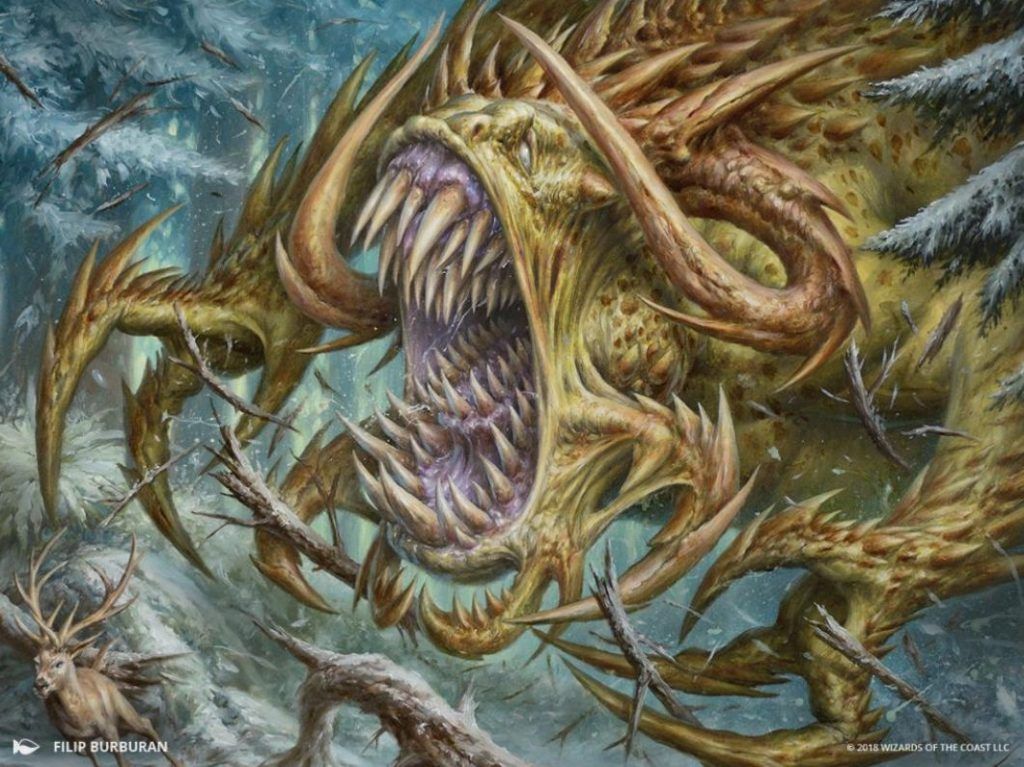

Tarmogoyf | Illustration by Filip Burburan
The real discussion comes down to Arena Anthologies 1 and 2. Both bring a lot of iconic cards to Arena, but whether they’re worth buying depends on what you play and how deep your wildcard pool is. If you need full playsets of rares and mythics, the bundles are a solid deal. If you’re more of a Brawl player or only need a card or two, crafting is probably the smarter move.
The older Historic and Explorer Anthologies show us that these bundles have always been a mix—sometimes stacked with staples, other times padded with filler. That history makes it even clearer that the decision is personal: Buy if the cards line up with your decks, craft if they don’t.
So what’s your call? Are you picking up both, or just grabbing the key cards? Let me know in the comments, and if you enjoyed the content, don’t forget to follow on social media to stay up to date with every new article.
And don’t forget to check out Draftsim’s Arena Tutor to help improve your gameplay, your drafting decisions, and more!
Take care, and I’ll see you next time.
Follow Draftsim for awesome articles and set updates:


